If you’ve ever wondered how to clean indoor concrete floors without wrecking the surface, you’re in the right place. Got concrete floors inside? Good on ya — they’re tough as nails, low-fuss, and look flash when done right. But don’t fall into the trap of thinking they’re maintenance-free. Whether it’s polished concrete in a Melbourne café or sealed slabs in your garage-turned-home-gym, the wrong mop, harsh cleaner or sloppy technique can cause flaking, staining, or dull patches fast. Seen a concrete floor go chalky? That’s not wear and tear — that’s cleaning gone wrong.

Not All Slabs Are Created Equal
- Polished concrete – Glossy, dense, usually sealed. Needs pH-neutral cleaners and soft microfiber cleaning pads.
- Sealed concrete – Often has a topical protective coating. Can be slippery when wet and not all cleaning products play nice.
- Stained or dyed concrete – Decorative finish and sensitive. Acidic cleaners? Don’t even think about it — use a natural solution or a mild cleaning agent.
- Unsealed concrete – Porous surface, rough and thirsty. Absorbs spills fast and needs gentle cleaning materials and special attention.
Not sure what you’ve got? A splash test with clean water can help: if it beads, it’s sealed; if it darkens the surface, it’s porous.
Tools & Products You Actually Need
Your Go-To Gear:
Forget the aisle full of overpriced “miracle” floor sprays. Here’s what actually gets the job done without ruining your concrete finish:
- Microfiber mop or microfiber dust mop (get rid of that old string mop)
- Soft-bristle broom or stiff-bristled broom for dry prep
- Spray bottle for spot cleaning
- Warm water in a bucket (not scalding hot)
- pH-neutral floor cleaner or mild detergent
- Wet/dry vacuum or commercial vacuum cleaner
- Steam mop (only if the manufacturer approves for your floor finish)
- Stiff-bristled brush or nylon-bristle brush for tough stains
- Vacuum cleaner with soft brush attachment
- A bucket of water mixed with cleaner and Microfiber cleaning pads
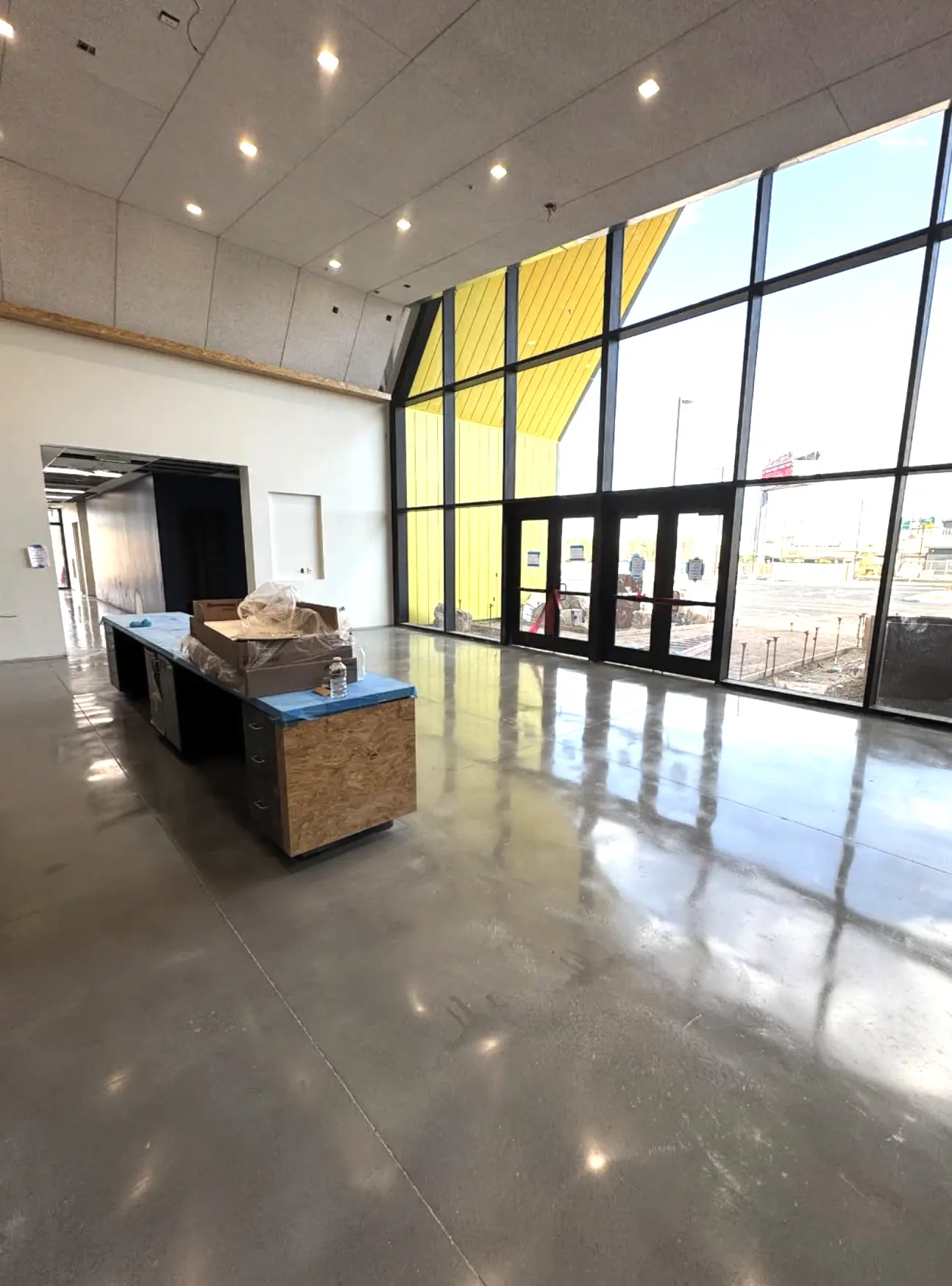
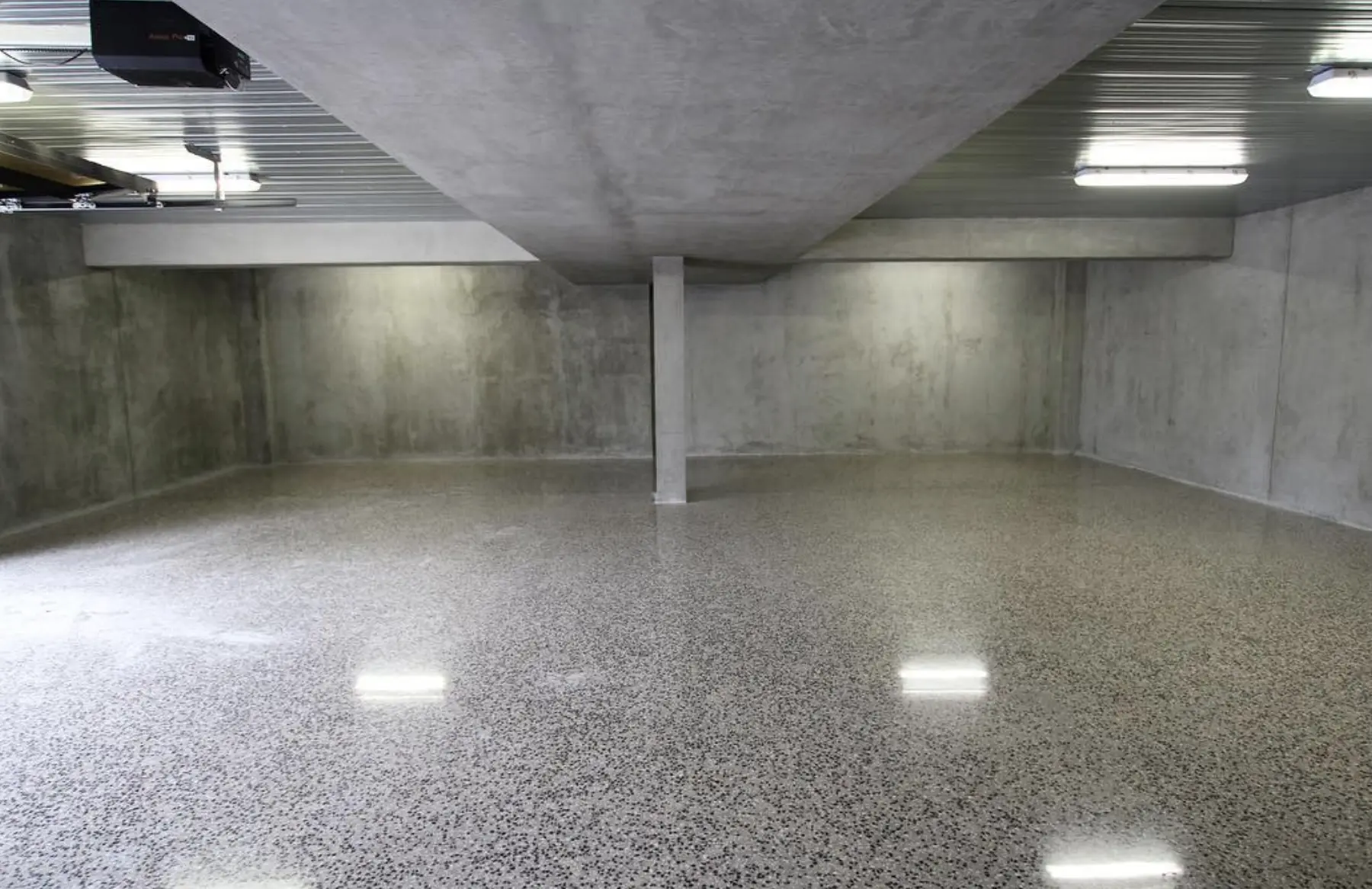
Avoid These Like a Bad Reno Job:
- Harsh chemicals like bleach, Muriatic acid or hydrochloric acid
- Acidic cleaners, vinegar or lemon juice — too harsh for polished floors
- Abrasive scrubbers or metal-bristle brushes
- Pressure washer or power washer indoors
- Harsh cleaning products and chemical cleaning agents are not designed for indoor flooring
How to Clean Floors Like a Pro
Righto, here’s how we do it — same method we use in schools, showrooms and suburban lounges. Whether you’re doing a basic clean or full deep clean, these steps will keep your concrete floor cleaning safe and effective.
Dry sweep or vacuum
Mix your cleaner
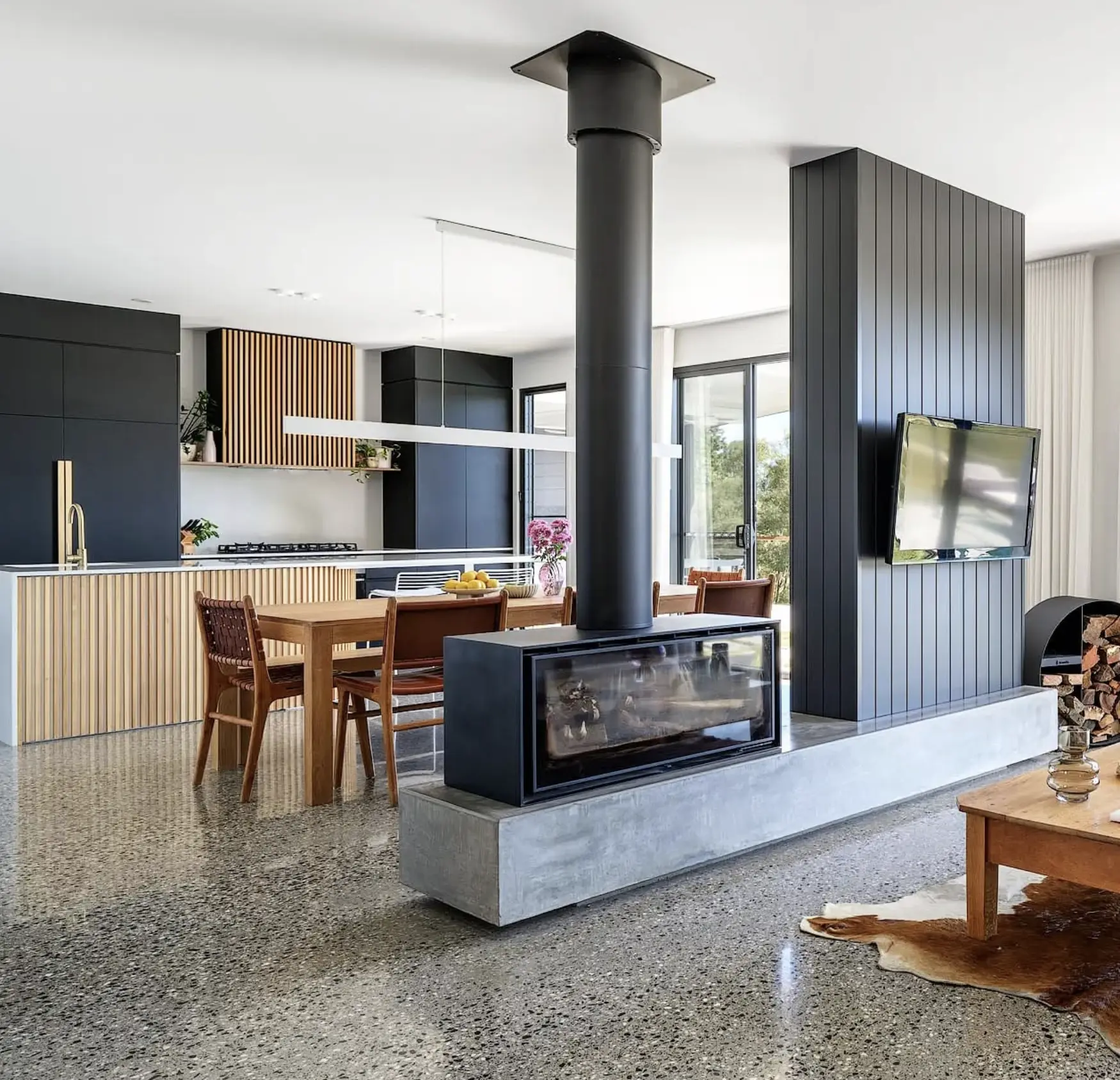

Damp mop method
Spot clean the stubborn stuff
Dry if needed
Rinse occasionally
Use plain water every few months to remove soapy residue or buildup from commercial solutions. This will maintain the original shine of your polished surface.
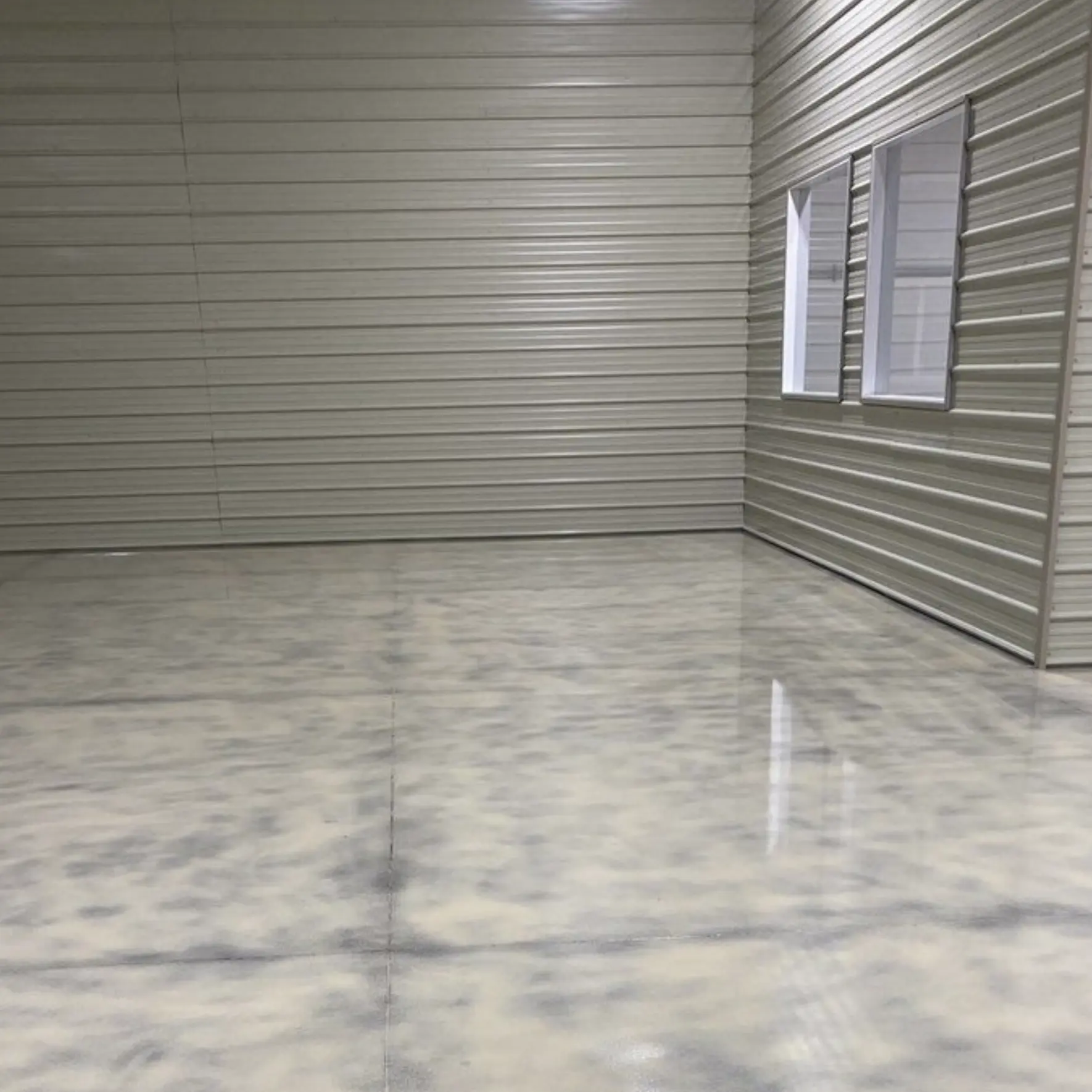
Seasonal Tips for Different Aussie Climates
- North (QLD, Top End):
- Mould in unsealed corners
- Use a dehumidifier during the wet weather
- Floors may take longer to dry — use fans or an auto scrubber
- South (VIC, TAS):
- Winter grime from muddy boots and contaminants from foot traffic
- Salt from coastal breezes? Clean more often
- Heated slabs? Avoid thermal shock — don’t blast cold water on a warm polished finish
- Inland & rural (NT outback, WA farms):
- Red dust and dirt get everywhere — vacuum regularly
- Bore water leaves white crusty deposits — clean with mild cleaner
- Don’t over-wet during dry spells — arid conditions can cause cracks over time

Maintenance Checklist
- Weekly:
- Dry sweep with an angled broom or a commercial floor sweeper machine
- Damp mop high-traffic areas with minimal water and mild detergent
- Fix stains early with proper stain removers or a natural solution
- Monthly:
- Rinse with clean water to prevent build-up
- Spot clean stubborn dirt with a nylon-bristle brush
- Vacuum corners, especially near rubber-backed mats
- Seasonally (every 3–4 months):
- Check seal wear — test with a splash of water
- Re-seal if water no longer beads
- Buff with commercial floor cleaning equipment or floor scrubbers
- Reapply wax or acrylic resins where needed
Common Mistakes That Wreck Indoor Concrete
We’ve seen some doozies in our time. Here’s how to avoid turning your hard floor into a mess:
- Using harsh cleaners like Muriatic acid or acidic substance on finish — will damage your floor finish
- Overwetting — causes residue, cracks or stains on porous surfaces
- Not dusting — causes scratches from dirt and abrasive particles
- Using abrasive tools — damages polished concrete and floors resistant to standard wear
- Pressure washing indoors — huge no no, even on outdoor floors we use extreme caution
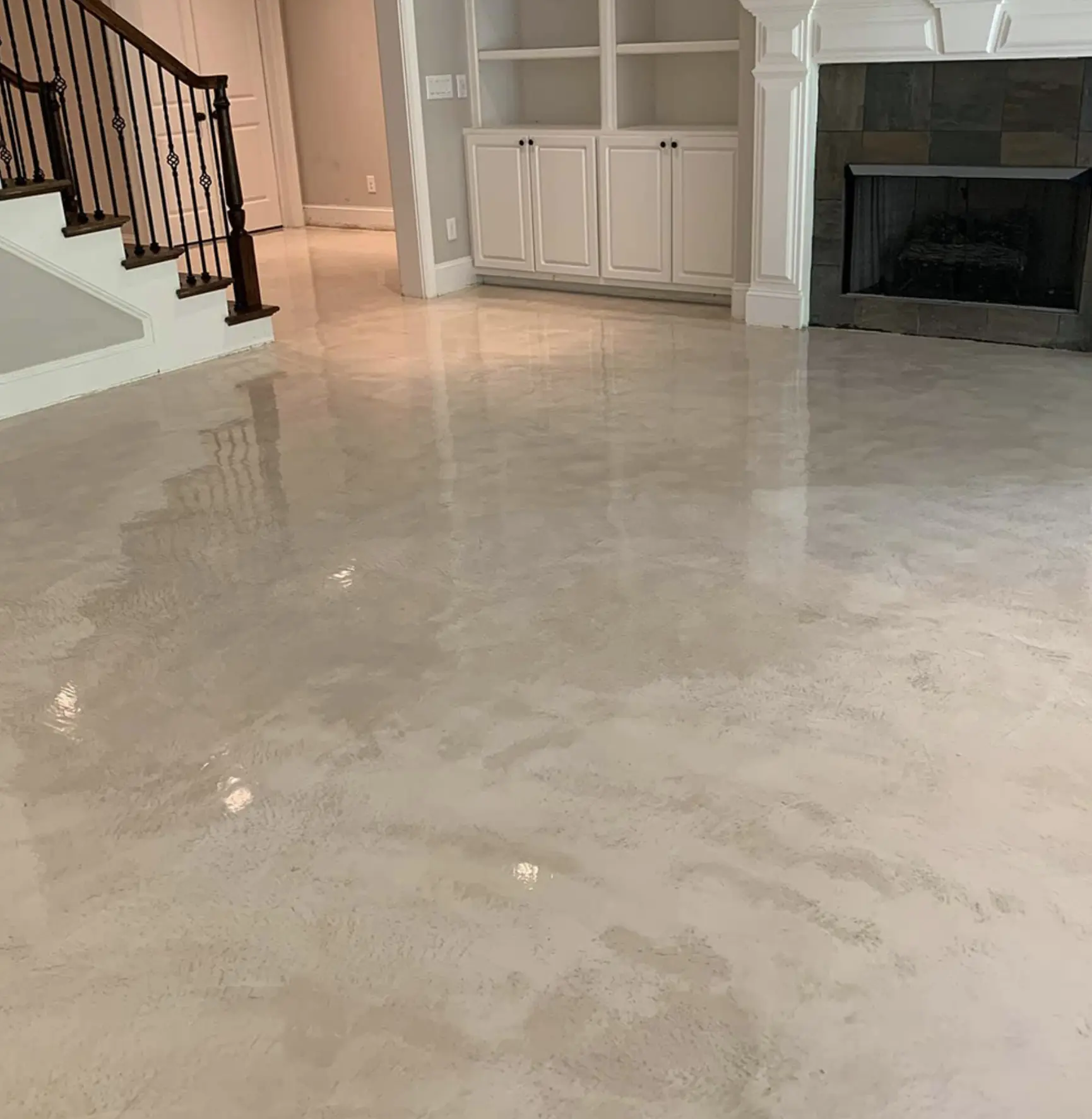
Also — don’t forget: too much detergent = soapy residue = sticky floors. Stick to the basics with the right cleaning products.
Just like the Window Cleaning Melbourne Crew knows their way around a streak free shine, we know what it takes to keep concrete floors looking their best indoors. Concrete flooring is a durable material but it still needs the right care. Whether it’s a garage slab or commercial space, proper cleaning means fewer costly repairs and better stain protection.
FAQ
Can I just mop concrete floors with water?
Yes, for basic cleaning. But for deeper cleaning or tough stains use a mild cleaning agent or the correct cleaning solution.
How often should I reseal indoor concrete floors?
Every 1–3 years depending on foot traffic and current condition. If water stops beading, reseal.
Are steam mops safe for polished concrete?
Only if the manufacturer says it’s okay. Otherwise you’ll damage the polished surface or protective coating.
How do I clean oil stains off concrete?
Use liquid dish soap or Trisodium phosphate and a stiff-bristled brush. Hydrogen peroxide also works as a natural cleaner.
Why is my concrete floor sticky after mopping?
You’re using too much detergent or not rinsing with plain water. Try cleaning with water and reduce chemical cleaning products.
